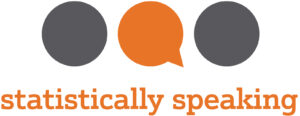You’ll be excited to hear we’re doing another Statistics Skills Accelerator for our Statistically Speaking members: Count Models.
Stats Skills Accelerators are structured events focused on an important topic. They feature Stat’s Amore Trainings in a suggested order, as well as ![]() live Q&As specific to the Accelerator.
live Q&As specific to the Accelerator.
In August, our mentors will be running a new Accelerator. The first Q&A is August 6, 2025 at 3 pm ET, hosted by Jeff Meyer.
Count models are used when the outcome variable in a model or group comparison is a discrete count:
- Number of eggs in a clutch
- Number of days in intensive care
- Number of aggressive incidents in detention
- Poisson Regression is the simplest and is the basis for all the other models, but its assumptions are rarely met with real data.
- Negative Binomial regression adds an extra parameter to a Poisson regression measure the extra variance that often occurs in real data.
- Truncated count models work when the lowest values (often just zero) cannot occur. This happens when a count has to occur in order to be part of the population of interest.
- Zero inflated count models are used when there are more zeros than expected. For this model, some zeros could have been something else and others couldn’t.
- Hurdle models also work when there are more zeros than expected, but the process of having a zero is different. In these models, there is an actual “hurdle” one has to pass in order to have a non-zero count.
- Logistic regression, when your count is out of of maximum number.
Note: This training is an exclusive benefit to members of the Statistically Speaking Membership Program and is a combination of watching recorded trainings and live events.
Just head over and sign up for Statistically Speaking.
You'll get access to this training webinar, 130+ other stats trainings, a pathway to work through the trainings that you need — plus the expert guidance you need to build statistical skill with live Q&A sessions and an ask-a-mentor forum.


Leave a Reply